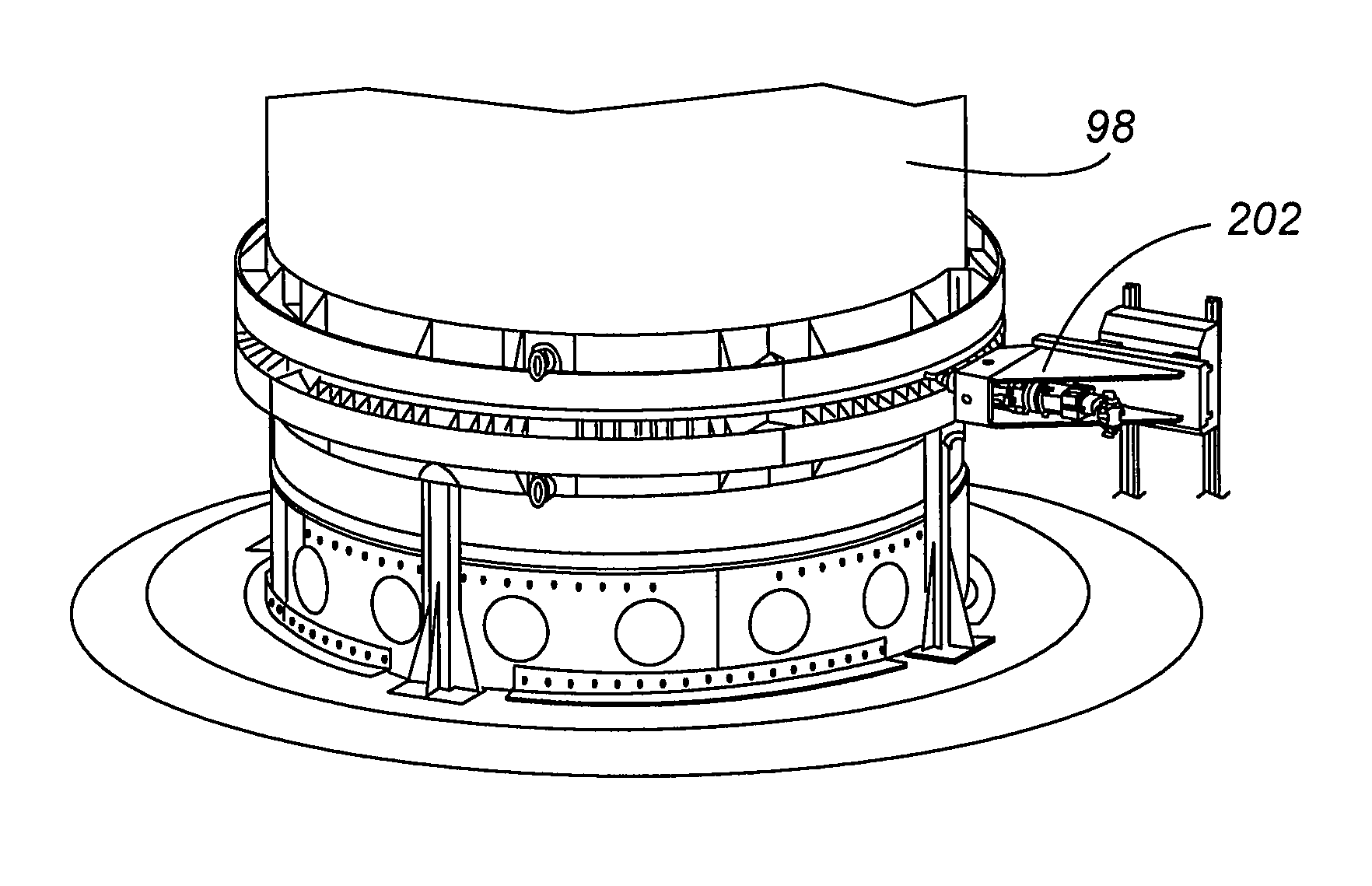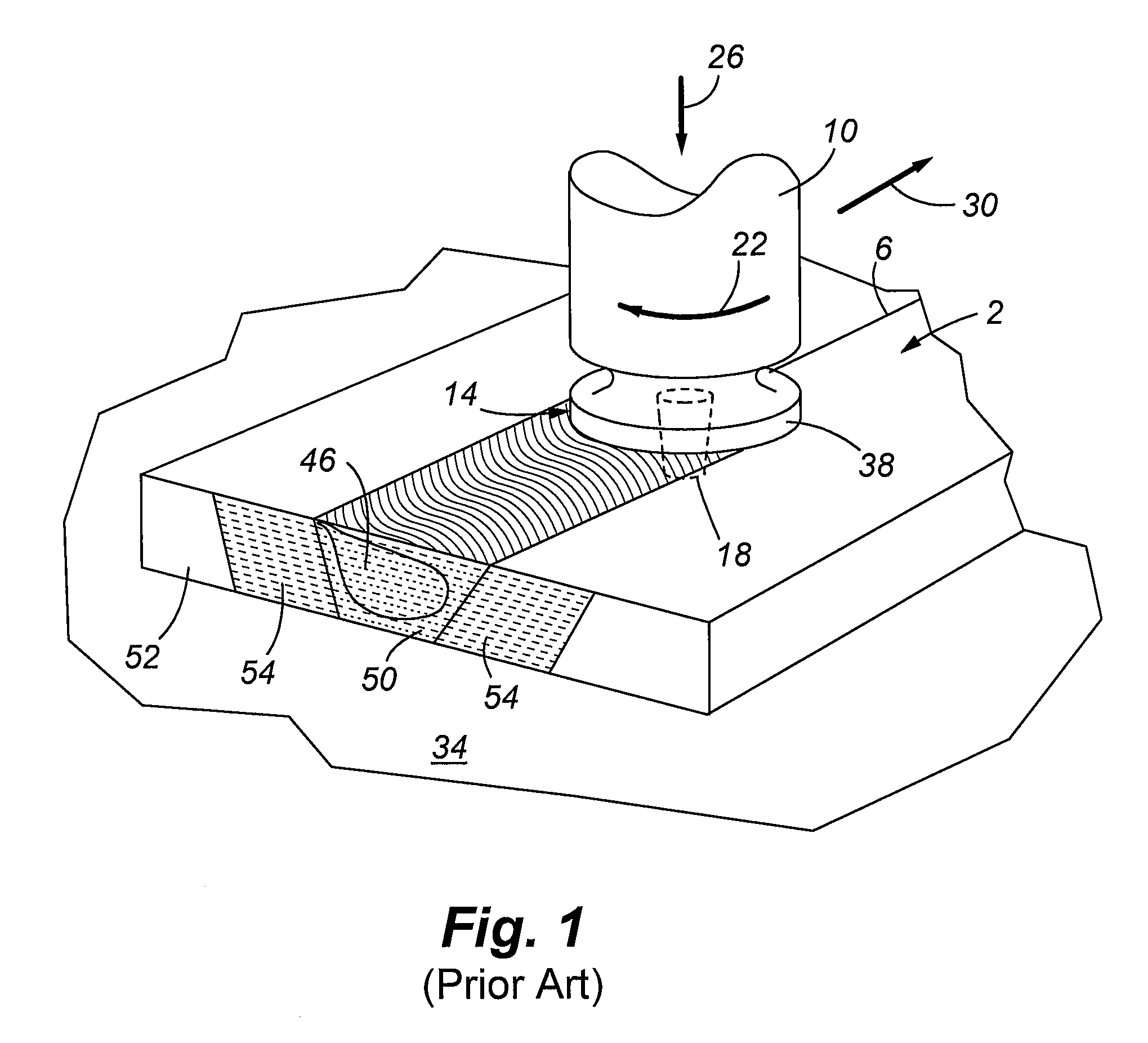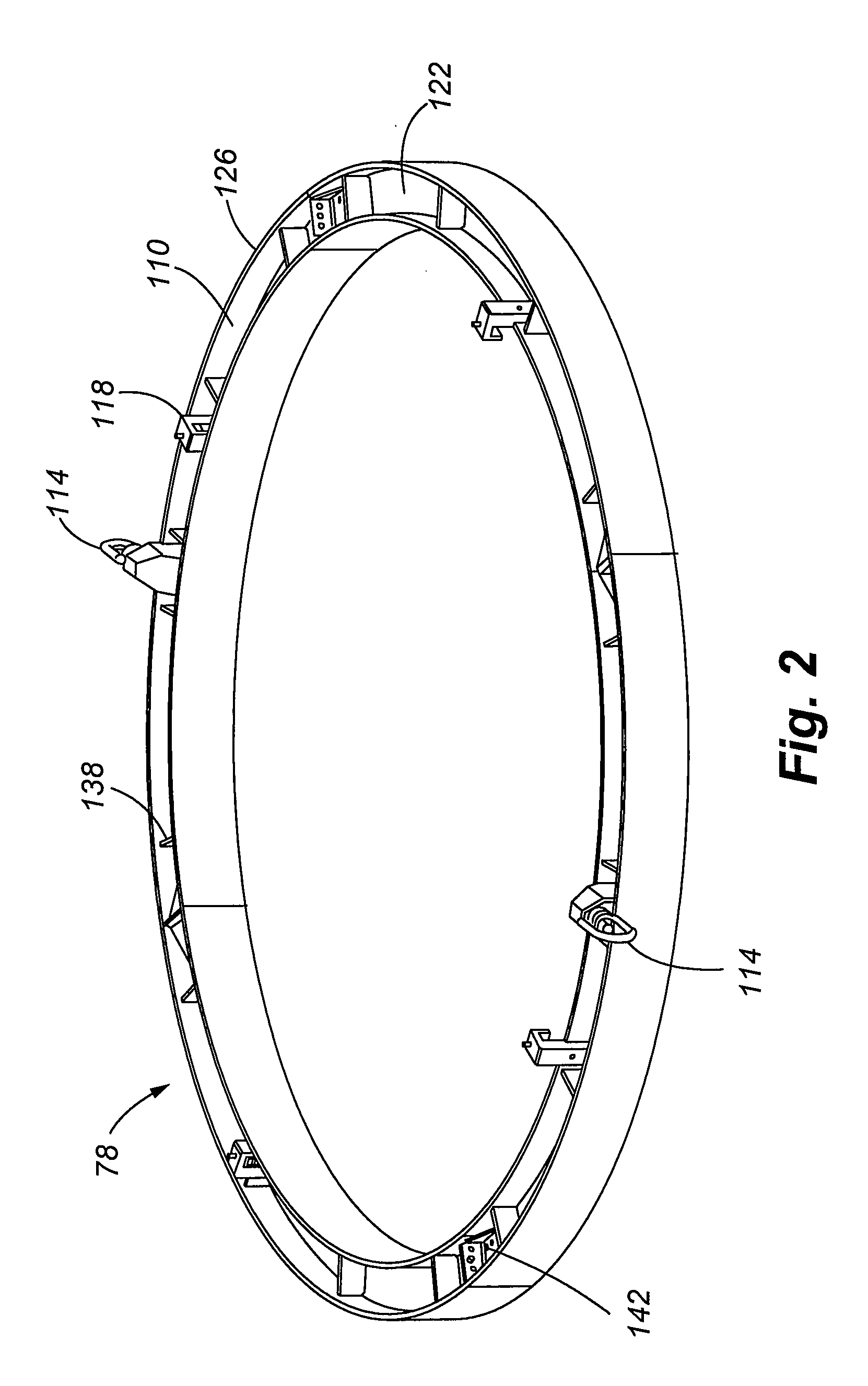Friction stir welding apparatus, system and method
a stir welding and friction stir technology, applied in the field of metal fusion, can solve the problems of reducing so as to reduce the amount of circumferential friction stir welding used, increase the efficiency of welding, and reduce the effect of manpower
- Summary
- Abstract
- Description
- Claims
- Application Information
AI Technical Summary
Benefits of technology
Problems solved by technology
Method used
Image
Examples
Embodiment Construction
Referring now to FIG. 1, a prior art friction stir weld technique is illustrated wherein work pieces 2 are abutted to form a joint 6 therebetween. A friction stir welding tool includes a head 10 with associated shoulder 14 and pin 18. In practice, the shoulder 14 is placed on the work pieces 2 and the pin 18 is placed within the joint 6 after sufficient heat is generated by the spinning tool to allow penetration thereof. The head 10 is then forced downwardly onto the work pieces 2 as indicated by arrow 26 and is transitioned relative thereto 30. One skilled in the art will appreciate that the work pieces 2 may also move relative to the rotating head 10. The force 26 generated by the head 10 is reacted by a backing bar 34. As the head 10 is rotated and moved forward in the direction 30, friction is generated by the shoulder 14 and the pin 18 which keeps the metal of a portion of both work pieces 2 such that metal adjacent to a leading edge 38 of the shoulder 14 is moved / displaced to ...
PUM
| Property | Measurement | Unit |
|---|---|---|
| Length | aaaaa | aaaaa |
| Distance | aaaaa | aaaaa |
| Force | aaaaa | aaaaa |
Abstract
Description
Claims
Application Information
 Login to View More
Login to View More - R&D
- Intellectual Property
- Life Sciences
- Materials
- Tech Scout
- Unparalleled Data Quality
- Higher Quality Content
- 60% Fewer Hallucinations
Browse by: Latest US Patents, China's latest patents, Technical Efficacy Thesaurus, Application Domain, Technology Topic, Popular Technical Reports.
© 2025 PatSnap. All rights reserved.Legal|Privacy policy|Modern Slavery Act Transparency Statement|Sitemap|About US| Contact US: help@patsnap.com



